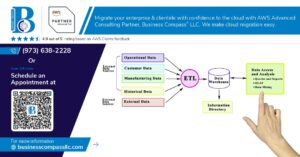In an era where APIs form the backbone of modern software applications, ensuring their security is paramount. With cyber threats evolving at an alarming rate, organizations can’t afford to leave their APIs vulnerable. But how can you fortify your APIs against potential breaches and attacks?
Enter the world of API security best practices. From implementing HTTPS for secure communication to conducting regular security audits, there’s a wealth of strategies at your disposal. 🛡️ Whether you’re a seasoned developer or just starting your journey in API management, understanding these practices is crucial. After all, a single security oversight could lead to devastating consequences for your business and users.
In this comprehensive guide, we’ll explore nine essential best practices for API security. We’ll delve into strong authentication mechanisms, effective API key management, and the importance of following OWASP API Security Guidelines. By the end of this post, you’ll be equipped with the knowledge to significantly enhance your API’s security posture and protect your valuable data. Let’s dive in and unlock the secrets to robust API security! 🔐
Implement HTTPS for Secure Communication

A. Use TLS/SSL encryption
Implementing HTTPS for secure communication is crucial for API security. TLS (Transport Layer Security), the successor to SSL (Secure Sockets Layer), is the cornerstone of this implementation. Here’s why TLS/SSL encryption is essential:
- Data confidentiality: TLS encrypts data in transit, protecting sensitive information from interception.
- Server authenticity: It ensures communication with legitimate servers, preventing impersonation attacks.
- Data integrity: TLS safeguards against data tampering during transmission.
HTTPS, recognizable by URLs starting with “https://”, utilizes TLS to create a secure connection. While HTTPS offers significant security benefits, it’s important to note that it’s not invulnerable to attacks. Potential threats include:
- Exploiting protocol or cipher vulnerabilities
- Compromising user devices through phishing
- Using fake certificates
However, these attacks are complex and costly compared to the relative ease of intercepting standard HTTP communications.
| Feature | HTTP | HTTPS |
|---|---|---|
| Data encryption | No | Yes |
| Server authentication | No | Yes |
| Vulnerability to interception | High | Low |
| URL prefix | http:// | https:// |
B. Obtain and maintain valid SSL certificates
To implement HTTPS effectively, you must obtain and maintain valid SSL certificates. Here are key points to consider:
- Certificate Authority (CA): Obtain certificates from trusted CAs to ensure browser recognition.
- Certificate management: Many cloud hosting services like Heroku or AWS can handle certificate management for you.
- Regular renewal: SSL certificates have expiration dates. Set up reminders or automated processes for timely renewal.
- Certificate type: Choose the appropriate certificate type based on your needs (e.g., single-domain, wildcard, or multi-domain).
By implementing HTTPS with valid SSL certificates, you create a secure foundation for your API. This security measure is crucial for protecting data in transit and maintaining user trust.
Now that we have covered the importance of HTTPS for secure communication, we’ll next explore how to implement strong authentication mechanisms to further enhance API security.
Implement Strong Authentication Mechanisms

Now that we’ve covered the importance of implementing HTTPS for secure communication, let’s dive into another crucial aspect of API security: implementing strong authentication mechanisms.
A. Utilize OAuth2 for secure authorization
OAuth2 has become the industry standard for secure API authorization. This framework allows third-party applications to access resources without exposing user credentials, enhancing overall security. Here’s why OAuth2 is essential:
- Stateless and stateful modes: OAuth2 can be implemented in both stateless and stateful modes, offering flexibility based on security and efficiency requirements.
- Token-based authentication: OAuth2 uses tokens, which are more secure than traditional session-based methods for REST APIs.
- Centralized OAuth server: Implementing a centralized OAuth server streamlines the complex authentication process and improves credential management.
| OAuth2 Component | Purpose |
|---|---|
| Access Token | Short-lived token for resource access |
| Refresh Token | Long-lived token to obtain new access tokens |
| Authorization Server | Issues tokens and manages authentication |
| Resource Server | Hosts protected resources |
B. Implement WebAuthn for enhanced user authentication
While OAuth2 handles authorization, WebAuthn provides a robust solution for user authentication:
- Passwordless authentication: WebAuthn enables strong, passwordless authentication methods.
- Multi-factor authentication: It supports various authentication factors, including biometrics and hardware tokens.
- Phishing resistance: WebAuthn’s design makes it inherently resistant to phishing attacks.
To implement these authentication mechanisms effectively:
- Use secure cookies for storing tokens
- Protect against common vulnerabilities like cross-site scripting and request forgery
- Implement rate limiting to prevent brute-force attacks
- Regularly audit and review authentication practices
By combining OAuth2 for authorization and WebAuthn for authentication, you create a robust security layer for your API. This approach not only enhances protection against unauthorized access but also improves user experience through features like Single Sign-On (SSO).
With strong authentication mechanisms in place, the next step is to manage API keys effectively, which we’ll explore in the following section.
Manage API Keys Effectively

Now that we have covered the importance of implementing strong authentication mechanisms, let’s delve into how to effectively manage API keys, which is a crucial aspect of API security.
A. Use leveled API keys for granular access control
Implementing leveled API keys allows for more precise control over access to your API. This approach adheres to the principle of least privilege, ensuring that users and applications only have access to the specific resources they need. Here’s how to implement this strategy:
- Define access levels based on functionality or data sensitivity
- Generate unique API keys for each level
- Associate each key with specific permissions
- Regularly review and adjust access levels as needed
| Access Level | Permissions | Use Case |
|---|---|---|
| Read-only | GET requests only | Data retrieval |
| Standard | GET, POST requests | Basic operations |
| Admin | All HTTP methods | Full API access |
By implementing this granular approach, you significantly reduce the risk of unauthorized access and potential data breaches.
B. Implement proper key rotation and revocation processes
Regular rotation of API keys is essential for maintaining security. This practice limits the impact of any compromised key and helps prevent long-term unauthorized access. Here are key steps to implement an effective rotation process:
- Set a schedule for regular key rotation (e.g., quarterly)
- Generate new keys before revoking old ones
- Update applications with new keys
- Revoke old keys after a transition period
- Monitor usage of both old and new keys during transition
For key revocation:
- Implement a system to quickly disable compromised or unused keys
- Maintain an audit trail of key revocations
- Educate your team on the importance of promptly reporting suspicious activity
Remember to use secure methods for storing and transmitting API keys, such as environment variables or dedicated key management services. Avoid hardcoding keys in application code, as this can lead to accidental exposure.
With effective API key management in place, the next step is to apply rate limiting and throttling to further protect your API from abuse and ensure fair usage among clients.
Apply Rate Limiting and Throttling
Now that we’ve covered the importance of managing API keys effectively, let’s explore another crucial aspect of API security: rate limiting and throttling.
Set appropriate request limits per user or API key
Rate limiting is a critical technique for regulating the frequency of requests made to an API. By setting appropriate request limits, we can:
- Prevent abuse and ensure equitable access for all users
- Safeguard against denial-of-service (DoS) attacks
- Manage resource utilization and reduce operational costs
- Enhance overall user experience
To implement effective rate limiting:
- Assess traffic patterns
- Use dynamic limits based on user tiers (e.g., free vs. premium)
- Monitor user activity continuously
- Establish appropriate timeouts
| Method | Description | Benefit |
|---|---|---|
| Token Bucket | Allows burst traffic within limits | Flexible for varying usage patterns |
| Leaky Bucket | Smooths out request flow | Consistent traffic management |
| Fixed Window Counter | Simple to implement | Easy to understand and maintain |
| Sliding Window Counter | More accurate over time | Prevents edge-case abuse |
Implement graduated throttling for suspicious activity
Throttling is a strategy that allows users to continue using services while mitigating risks. Graduated throttling involves:
- Identifying suspicious activity patterns
- Implementing progressive restrictions on request rates
- Communicating limits clearly through API documentation
Best practices for throttling:
- Offer tiered access levels (e.g., GitHub’s 5,000 requests per hour per user)
- Provide mechanisms for users to check their rate limit status
- Utilize request queues to manage traffic spikes
- Implement caching for frequently accessed responses
By applying these rate limiting and throttling techniques, we can maintain optimal API performance, security, and user satisfaction. With this robust protection in place, we can now move on to exploring the importance of API versioning in our security strategy.
Utilize API Versioning
Now that we’ve covered the importance of rate limiting and throttling to protect your API from abuse, let’s delve into another crucial aspect of API security: versioning. API versioning is essential for managing changes and improvements without disrupting existing functionality.
A. Maintain backward compatibility
Maintaining backward compatibility is a cornerstone of effective API versioning. It ensures that existing users can continue to use your API without encountering unexpected errors or data corruption. Here are key points to consider:
- Design for extensibility from the outset
- Understand consumer usage patterns
- Separate implementation from contract versioning
- Conduct thorough testing before releasing new versions
When implementing changes, follow these steps:
- Choose a versioning strategy during the design phase
- Confirm whether a new version is essential
- Update documentation to communicate changes
- Gradually deploy the new version while collecting feedback
- Eventually deprecate the old version while supporting users through the transition
| Versioning Method | Advantages | Challenges |
|---|---|---|
| URL versioning | Easy access | Potential code duplication |
| Media type versioning | Effective for content negotiation | Complex implementation |
| Query parameter versioning | Flexible | Adds complexity to existing logic |
B. Clearly communicate version changes to users
Clear communication is vital for maintaining trust and ensuring a smooth transition between API versions. Consider the following best practices:
- Incorporate a versioning policy in your terms of service
- Provide comprehensive documentation for each version
- Use semantic versioning (MAJOR.MINOR.PATCH) to indicate the nature of changes
- Offer migration guides and support for users transitioning to newer versions
Effective communication strategies include:
- Sending notifications about upcoming changes
- Providing a changelog detailing modifications in each version
- Offering a deprecation schedule for older versions
- Maintaining open channels for user feedback and support
By implementing these practices, you can ensure that your API evolves smoothly while maintaining a positive user experience. With API versioning in place, the next step is to consider implementing IP whitelisting for an additional layer of security.
Implement IP Whitelisting
Now that we’ve explored API versioning, let’s delve into another crucial aspect of API security: IP whitelisting. This practice adds an extra layer of protection to your API by controlling access based on IP addresses.
Restrict API access to trusted IP addresses
IP whitelisting is a powerful security measure that allows you to specify which IP addresses can make requests to your API. By implementing this feature, you can significantly reduce the risk of unauthorized access and potential security breaches.
Here’s a simple breakdown of how IP whitelisting works:
| Step | Description |
|---|---|
| 1 | Define a list of trusted IP addresses |
| 2 | Configure your API to check incoming requests against this list |
| 3 | Allow access for requests from whitelisted IPs |
| 4 | Deny access for requests from non-whitelisted IPs |
To implement IP whitelisting, you’ll need to:
- Log into your API management dashboard
- Navigate to the API access or security settings
- Add the approved IP addresses to your whitelist
Remember, unauthorized IP addresses will receive an access denial error, effectively blocking potential threats from accessing your API.
Regularly review and update whitelist
Maintaining the security of your API doesn’t stop at initial implementation. It’s crucial to regularly review and update your IP whitelist to ensure it remains effective and relevant. Here are some best practices:
- Conduct periodic reviews of your whitelist
- Remove IP addresses that are no longer in use or trusted
- Add new IP addresses for legitimate users or services
- Keep detailed logs of changes made to the whitelist
- Implement a process for emergency updates in case of security incidents
By following these practices, you can maintain a robust IP whitelisting system that adapts to your changing security needs and continues to protect your API effectively.
As we move forward, we’ll explore how to follow OWASP API Security Guidelines, which will complement the IP whitelisting strategy we’ve just discussed. These guidelines provide a comprehensive framework for securing your API against a wide range of potential threats.
Follow OWASP API Security Guidelines
Now that we’ve covered IP whitelisting as a security measure, let’s delve into another crucial aspect of API security: following OWASP API Security Guidelines.
Address top API security risks
The Open Web Application Security Project (OWASP) provides a comprehensive framework for addressing critical API vulnerabilities. The 2023 OWASP Top 10 API Security Risks outlines the most pressing threats:
- Broken Object Level Authorization (API1:2023)
- Broken Authentication (API2:2023)
- Broken Object Property Level Authorization (API3:2023)
- Unrestricted Resource Consumption (API4:2023)
- Broken Function Level Authorization (API5:2023)
- Unrestricted Access to Sensitive Business Flows (API6:2023)
- Server Side Request Forgery (API7:2023)
- Security Misconfiguration (API8:2023)
- Improper Inventory Management (API9:2023)
- Unsafe Consumption of APIs (API10:2023)
To mitigate these risks, implement the following measures:
- Enforce granular access controls
- Strengthen authentication mechanisms
- Implement proper authorization checks at object and property levels
- Apply rate limiting and resource throttling
- Validate user-supplied data in server-side requests
- Maintain a comprehensive API inventory
Regularly update security practices based on OWASP recommendations
OWASP continuously updates its guidelines to reflect the evolving threat landscape. The 2023 update introduced significant changes from the 2019 version:
| 2019 Version | 2023 Version |
|---|---|
| API 02:2019 | API 02:2023 (Refined) |
| API 03:2019 + API 06:2019 | API 03:2023 (Merged) |
| API 04:2019 | API 04:2023 (Replaced) |
| – | API 06:2023 (New) |
| – | API 07:2023 (New) |
| API 08:2019 | API 10:2023 (Modified) |
To stay current with OWASP recommendations:
- Regularly review the OWASP API Security Top 10
- Attend OWASP webinars and engage with their resources
- Contribute to the OWASP API Security project on GitHub
- Conduct periodic security audits based on updated guidelines
By following these OWASP guidelines, organizations can significantly enhance their API security posture. As we move forward, it’s essential to complement these practices with comprehensive logging and monitoring, which we’ll explore in the next section.
Implement Comprehensive Logging and Monitoring
Now that we’ve covered the importance of following OWASP API Security Guidelines, let’s delve into another crucial aspect of API security: comprehensive logging and monitoring.
A. Track API usage and potential security threats
Implementing robust logging and monitoring mechanisms is essential for maintaining the security of your APIs. By tracking API usage and potential security threats, you can gain valuable insights into your API’s performance and identify suspicious activities early on.
To effectively track API usage and potential security threats, consider the following approaches:
-
Implement API discovery tools:
- Use platforms like Salt Security or Stackhawk to automatically discover and inventory all your APIs.
- This helps create a comprehensive view of your API landscape, ensuring no endpoints are overlooked.
-
Utilize AI-powered monitoring:
- Leverage solutions like Salt Security’s AI-infused API Security Platform to analyze user activities over extended periods.
- This approach helps identify sophisticated API attacks that may not be immediately apparent.
-
Employ comprehensive logging:
- Record detailed information about API requests, responses, and any anomalies.
- Include data such as timestamps, IP addresses, user identifiers, and request payloads.
| Logging Aspect | Description | Importance |
|---|---|---|
| Request Details | API endpoint, method, headers | Identify patterns of use |
| User Information | IP address, user ID, geolocation | Detect unauthorized access |
| Response Data | Status codes, response times | Monitor performance issues |
| Error Logs | Detailed error messages, stack traces | Troubleshoot and improve security |
B. Set up alerts for suspicious activities
Once you have a robust tracking system in place, it’s crucial to set up alerts that can notify you of potential security threats in real-time.
Consider the following strategies for effective alerting:
-
Define threshold-based alerts:
- Set up alerts for unusual spikes in API traffic or high error rates.
- Use tools like Stackhawk to monitor and respond to threats in real-time.
-
Implement behavior-based alerting:
- Utilize Salt Security’s adaptive intelligence capabilities to analyze API data and detect anomalies in usage patterns.
- Create alerts for deviations from normal behavior that could indicate an attack.
-
Prioritize potential threats:
- Use Salt Security’s feature to create prioritized lists of potential threats.
- This helps focus resources on the most critical security issues.
-
Integrate with existing systems:
- Ensure your API security monitoring tools integrate with your current security information and event management (SIEM) systems.
- This allows for centralized monitoring and faster response times.
By implementing comprehensive logging and monitoring, along with effective alerting systems, you can significantly enhance your API security posture. This proactive approach allows you to detect and respond to potential threats quickly, minimizing the risk of successful attacks.
With this robust monitoring system in place, we can now move on to the next crucial step in maintaining API security: conducting regular security audits and testing. This process will help ensure that your APIs remain secure over time and can adapt to new threats as they emerge.
Conduct Regular Security Audits and Testing
Now that we’ve covered the importance of comprehensive logging and monitoring, let’s dive into another crucial aspect of API security: regular audits and testing. This practice is essential for maintaining a robust security posture and ensuring that your API remains protected against evolving threats.
Perform penetration testing on API endpoints
Penetration testing, or pen testing, is a critical component of API security audits. It involves simulating real-world attacks on your API endpoints to identify vulnerabilities that could be exploited by malicious actors. Here’s why it’s crucial:
- Uncovers hidden vulnerabilities
- Assesses the effectiveness of existing security measures
- Provides actionable insights for remediation
When conducting penetration testing on API endpoints, consider the following approaches:
| Approach | Description | Advantage |
|---|---|---|
| Black box | Simulates external attacks without prior information | Mimics real-world scenarios |
| White box | Provides extensive information for deeper analysis | Allows for thorough examination |
| Grey box | Presents partial information reflective of a compromised system | Balances realism and depth |
Use automated tools for continuous security assessment
While manual penetration testing is valuable, incorporating automated tools for continuous security assessment can significantly enhance your API security efforts. These tools offer several benefits:
- Consistent and frequent scanning
- Rapid identification of new vulnerabilities
- Integration with CI/CD pipelines for DevSecOps support
- Comprehensive vulnerability management dashboards
Some top API security audit tools include:
- Astra: Combines AI with manual testing, executing over 120 test cases
- Probely: Offers vulnerability scanning and compliance checks
- Akto: Provides integration with workflow tools
By leveraging these automated solutions, you can streamline the auditing process and ensure that your API security measures remain up-to-date and effective against the latest threats.
Remember, regular security audits and testing are not just about identifying vulnerabilities; they’re about fostering a culture of continuous improvement in your API security practices. By combining penetration testing with automated tools, you can create a robust security strategy that protects your APIs and maintains user trust in an increasingly interconnected digital landscape.
API security is paramount in today’s digital landscape. By implementing the best practices outlined in this post, such as using HTTPS, strong authentication mechanisms, effective API key management, rate limiting, versioning, IP whitelisting, and following OWASP guidelines, you can significantly enhance the security of your APIs. Regular security audits, comprehensive logging, and monitoring further strengthen your defense against potential threats.
As the API ecosystem continues to evolve, staying informed about the latest security trends and continuously improving your security measures is crucial. By prioritizing API security, you not only protect your organization’s valuable data and resources but also build trust with your users and partners. Remember, a secure API is the foundation of a robust and reliable digital infrastructure.




















